-
RESEARCH
Avaliação do risco de úlceras por pressão em pacientes hospitalizados com HIV/Aids
Revista Brasileira de Enfermagem. 2016;69(1):96-101
01-01-2016
Abstract
RESEARCHAvaliação do risco de úlceras por pressão em pacientes hospitalizados com HIV/Aids
Revista Brasileira de Enfermagem. 2016;69(1):96-101
01-01-2016DOI 10.1590/0034-7167.2016690113i
Views0RESUMEN
Objetivo:
evaluar el riesgo de desarrollar úlceras por presión en pacientes hospitalizados con VIH/SIDA.
Método:
estudio cuantitativo descriptivo con 35 pacientes. Caracterización epidemiológica y clínica de los pacientes en un instrumento mediante la Escala de Braden. Las variables se realizaron en forma descriptiva simple, por números absolutos.
Resultados:
la incidencia de la PU observada en 2 pacientes, y las comorbilidades fueron neumocistosis pneumocisti carinii y tuberculosis pulmonar. Se reveló que la subescala de fricción y fuerza de deslizamiento obtuvo una puntuación más baja, seguido por actividad y la nutrición, la movilidad y la humedad. La percepción sensorial obtuvo la puntuación más alta. Dos pacientes fueron clasificados como de “alto riesgo” a 6 de “alto riesgo”, 3 para “bajo riesgo” y el otro “ningún riesgo”.
Conclusión:
la calificación de riesgo, mediante el uso de escalas proporciona información objetiva para la toma de decisione de enfermería a un modo específico.
Keywords:Cuidados de EnfermagemDoença CrônicaFatores de RiscoSíndrome da Imunodeficiência AdquiridaÚlcera por PressãoSee more -
RESEARCH
Children with special health needs and family: implications for Nursing
Revista Brasileira de Enfermagem. 2016;69(1):88-95
01-01-2016
Abstract
RESEARCHChildren with special health needs and family: implications for Nursing
Revista Brasileira de Enfermagem. 2016;69(1):88-95
01-01-2016DOI 10.1590/0034-7167.2016690112i
Views0See moreABSTRACT
Objective:
to understand the family experience of children and adolescents with myelomeningocele by the discovery of chronic illness and their daily life in the realization of needed care to these people.
Method:
qualitative study, developed from October 2013 to February 2014, with family, in a pediatric hospital in Fortaleza. Data were collected through interviews and checked by analysis thematic category.
Results:
it was found that the diagnosis after the birth of the child caused fear and anguish to the families in front of the unknown and the unexpected and that over the years they started to deal with many challenges conducting the daily care due to the disease sequelae.
Conclusion:
nursing plays an important role in the lives of families, children and adolescents, through emotional support, guidelines and care inserted in the health care network.
-
RESEARCH
Evaluation of the care program implementation to people with high blood pressure
Revista Brasileira de Enfermagem. 2016;69(1):79-87
01-01-2016
Abstract
RESEARCHEvaluation of the care program implementation to people with high blood pressure
Revista Brasileira de Enfermagem. 2016;69(1):79-87
01-01-2016DOI 10.1590/0034-7167.2016690111i
Views0See moreABSTRACT
Objective:
to evaluate the implementation of the care program for people with hypertension in Maringá-PR.
Method:
it is an evaluative research of cross-sectional design. Data were collected through structured interviews with 63 nurses between April and June 2013.
Results:
as missing or insufficient, there were: transportation for outside activities; work equipment; educational materials; training resources; inclusion of the family in the care plan; risk classification of individuals; determination of therapy from the risk classification and referral of the patient to medical and/or specialized tests.
Conclusion:
in addition to qualifying structure, there are: the need to identify people with hypertension as risk factors, perform risk stratification and systematic care planning, establishing an advanced clinical practice, such as support for self-care and management cases, accomplish with existing protocols and develop collective actions based on information systems.
-
RESEARCH
Evaluation of quality of life of visually impaired
Revista Brasileira de Enfermagem. 2016;69(1):72-78
01-01-2016
Abstract
RESEARCHEvaluation of quality of life of visually impaired
Revista Brasileira de Enfermagem. 2016;69(1):72-78
01-01-2016DOI 10.1590/0034-7167.2016690110i
Views0ABSTRACT
Objective:
to evaluate the quality of life of visually impaired using WHOQOL-100.
Method:
exploratory, descriptive, and quantitative study, performed between April and May 2013 with 20 visually impaired of the Blind Association of Ceará, through interviews.
Results:
the analysis showed that males predominated (80%), 41-55 years (40%), students (50%) and personal income than the minimum wage (70%). Participants were self-rated with good quality of life (68.75%). The facets with the highest rates were personal relationships (74.06%), sexual activity (66.88%) and spirituality/religion/personal beliefs (65%). With lower rates were financial (43.44%), physical environment: pollution/noise/traffic/climate (46.88%), physical security and protection (37.19%), transport (35.63%) and medication or treatment dependency (8.25%).
Conclusion:
these results reflect the importance of the nurse to perform health education actions promoting the empowerment, autonomy and guaranteed of access in society for this clientele.
Keywords:Education of Visually Impaired PersonsNursingNursing CareQuality of LifeVisually Impaired PersonsSee more
-
RESEARCH
Coping strategies for oncology nurses in high complexity
Revista Brasileira de Enfermagem. 2016;69(1):67-71
01-01-2016
Abstract
RESEARCHCoping strategies for oncology nurses in high complexity
Revista Brasileira de Enfermagem. 2016;69(1):67-71
01-01-2016DOI 10.1590/0034-7167.2016690109i
Views0See moreABSTRACT
Objective:
to identify the coping strategies of oncology services of nurses in highly complex hospital care before the person with cancer.
Method:
it is a qualitative research, with 18 nurses in inpatient oncology units and/or outpatient chemotherapy in two cities in southern Brazil, sampled by a snowball and carrying out semi-structured interviews. Data were submitted to thematic analysis.
Results:
three categories emerged that show strategies such as denial and resignation in care, for support in the health team and the plurality and multiplicity of perspectives on the care, including the patient and his family and the search for personal and professional improvement.
Conclusion:
coping strategies are expressed in the cultural understanding of what it means to have cancer or not and management of health institutions for nurses to work with satisfaction. The service in education is a major factor in the development of ethical competence.
-
RESEARCH
Implementation of fast tests for syphilis and HIV in prenatal care in Fortaleza – Ceará
Revista Brasileira de Enfermagem. 2016;69(1):62-66
01-01-2016
Abstract
RESEARCHImplementation of fast tests for syphilis and HIV in prenatal care in Fortaleza – Ceará
Revista Brasileira de Enfermagem. 2016;69(1):62-66
01-01-2016DOI 10.1590/0034-7167.2016690108i
Views0See moreABSTRACT
Objective:
to describe the implementation of the Fast Test (FT) of syphilis and HIV in prenatal care in primary healthcare units in Fortaleza, Ceará.
Method:
a descriptive study with a quantitative approach. There were training supervisions carried out in 24 units between May and August 2014, and the inclusion criterion was to have at least one trained professional.
Results:
the physical space, the availability, validity and the performance of FT in prenatal were analyzed. The data were presented in simple frequency tables. It was identified adequate space in 79.2% of the units, availability of FT in 62.5%, performing the tests in 37.5%, and of these, 55.6% doing these procedures in routine prenatal care.
Conclusion:
the primary units have difficulties in implementing FT in syphilis and HIV in the prenatal routine. This activity is seen as an effective strategy to reduce vertical transmission of these infections.
-
RESEARCH
Evaluating child care in the Family Health Strategy
Revista Brasileira de Enfermagem. 2016;69(1):54-61
01-01-2016
Abstract
RESEARCHEvaluating child care in the Family Health Strategy
Revista Brasileira de Enfermagem. 2016;69(1):54-61
01-01-2016DOI 10.1590/0034-7167.2016690107i
Views0See moreABSTRACT
Objective:
to evaluate the healthcare provided to children under two years old by the Family Health Strategy.
Method:
evaluative, quantitative, cross-sectional study that used the Primary Care Assessment Tool – Child Version for measuring the access, longitudinality, coordination, integrality, family orientation and community orientation.
Results:
a total of 586 adults responsible for children under two years old and linked to 33 health units in eleven municipalities of the state of Minas Gerais, Brazil, were interviewed. The evaluation was positive for the attributes longitudinality and coordination, and negative for access, integrality, Family orientation and community orientation.
Conclusion:
there are discrepancies between health needs of children and what is offered by the service; organizational barriers to access; absence of counter-reference; predominance of curative and long-standing and individual preventive practices; verticalization in organization of actions; and lack of good communication between professionals and users.
-
RESEARCH
Factors associated with inconsistent condom use among people living with HIV/Aids
Revista Brasileira de Enfermagem. 2016;69(1):47-53
01-01-2016
Abstract
RESEARCHFactors associated with inconsistent condom use among people living with HIV/Aids
Revista Brasileira de Enfermagem. 2016;69(1):47-53
01-01-2016DOI 10.1590/0034-7167.2016690106i
Views0See moreABSTRACT
Objective:
to analyze the prevalence and factors associated with inconsistent use of condoms among people living with HIV/ Aids (PLWHA).
Method:
it is a cross-sectional study with 228, with individual interviews conducted in 2011. A multivariate analysis was performed with a logistic regression model.
Results:
143 participants met the inclusion criteria, and the prevalence of inconsistent condom use was 28.7%. However, there was greater adherence among men (79.3%). In the multivariate analysis, the independent variable daily use of alcohol (OR=11.02; 95% CI 1.84, 65.92; p = 0.021) was associated with inconsistent condom use. The chance of men making consistent condom use was higher than women (OR = 0.36, 95% CI 0.15, 0.81; p = 0.015).
Conclusion:
the prevalence of inconsistent condom male use among PLWHA was low, however, evidenced greater compliance among men over women with a statistically significant difference and the daily use of alcohol was associated with inconsistent condom use.
-
ORIGINAL ARTICLE
The nursing practice environment and hospital sociotechnical complexity: a mixed-methods study
Revista Brasileira de Enfermagem. 2024;77(6):e20230315
12-16-2024
Abstract
ORIGINAL ARTICLEThe nursing practice environment and hospital sociotechnical complexity: a mixed-methods study
Revista Brasileira de Enfermagem. 2024;77(6):e20230315
12-16-2024DOI 10.1590/0034-7167-2023-0315
Views1See moreABSTRACT
Objectives:
to analyze the relationship between the nursing practice environment and hospital sociotechnical complexity as perceived by nurses.
Methods:
a sequential explanatory mixed-methods study was conducted in a hospital in southern Brazil. The Brazilian version of the Practice Environment Scale-Nursing Work Index and the Complexity Characterization Questionnaire were administered to 132 nurses. Subsequently, semi-structured interviews were conducted with 18 participants, and the data were subjected to thematic analysis. Data integration was achieved through a connection approach.
Results:
the nursing practice environment was found to be favorable, except in the subscale concerning Staffing and Resource Adequacy, where complexity was present in the activities. The three emerging categories explained human and technical aspects related to complexity in the practice environment, quality of care, and patient safety. Unexpected variability was inversely correlated with the practice environment.
Conclusions:
the study results indicate a relationship between these constructs, with implications for the quality and the safety of care.
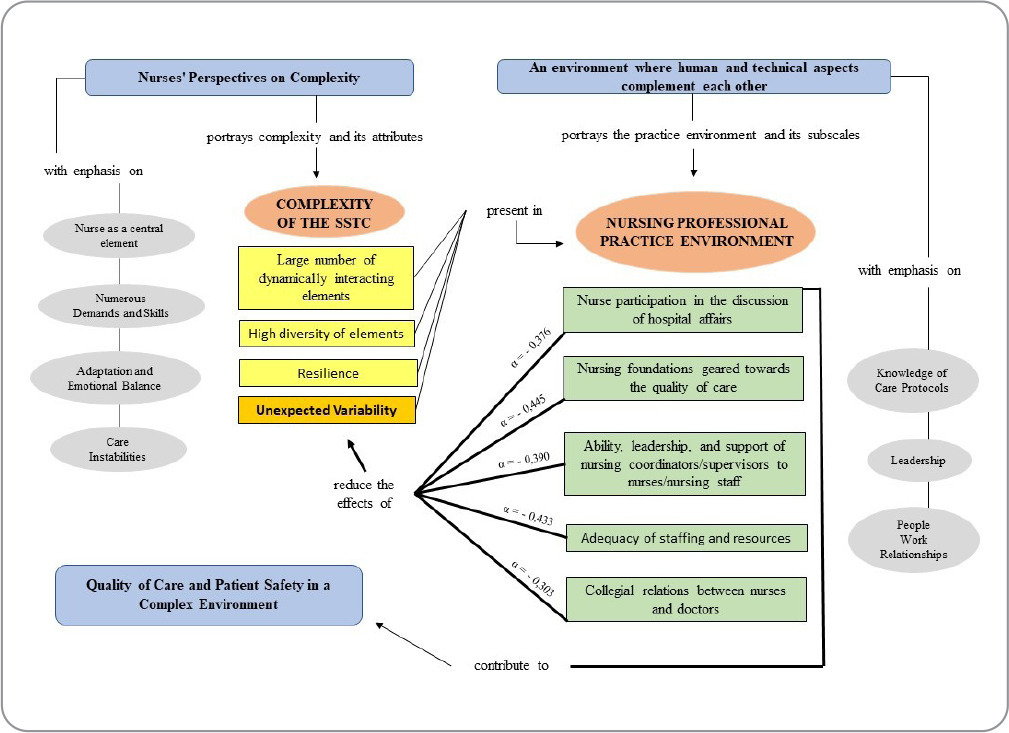
-
REVIEW
Recommendations for guidelines for promoting mental health in the workplace: an umbrella review
Revista Brasileira de Enfermagem. 2024;77(6):e20240086
12-16-2024
Abstract
REVIEWRecommendations for guidelines for promoting mental health in the workplace: an umbrella review
Revista Brasileira de Enfermagem. 2024;77(6):e20240086
12-16-2024DOI 10.1590/0034-7167-2024-0086
Views1See moreABSTRACT
Objectives:
to summarize the recommendations of guidelines for promoting mental health in the workplace.
Methods:
an umbrella review, according to Joanna Briggs Institute and Preferred Reporting Items for Systematic reviews and Meta-Analyses methodological assumptions. Data collection was carried out in January 2021 and updated in July 2023 in the American Psychological Association, Cochrane Library, EMBASE, National Library of Medicine, and Scopus databases. Systematic reviews that assessed guidelines with recommendations for mental health care for workers were included. PROSPERO registration CRD42023461845.
Results:
four systematic reviews published between 2015 and 2018 were identified. The abstracts highlighted actions that facilitate and inhibit the recommendations as well as three categories of intervention: primary prevention – worker protection; secondary prevention – promoting workers’ mental health; and tertiary prevention – supporting, monitoring and rehabilitating workers upon returning to work.
Conclusions:
the interventions are based on prevention, promotion and early recognition, support and rehabilitation of mental health problems.
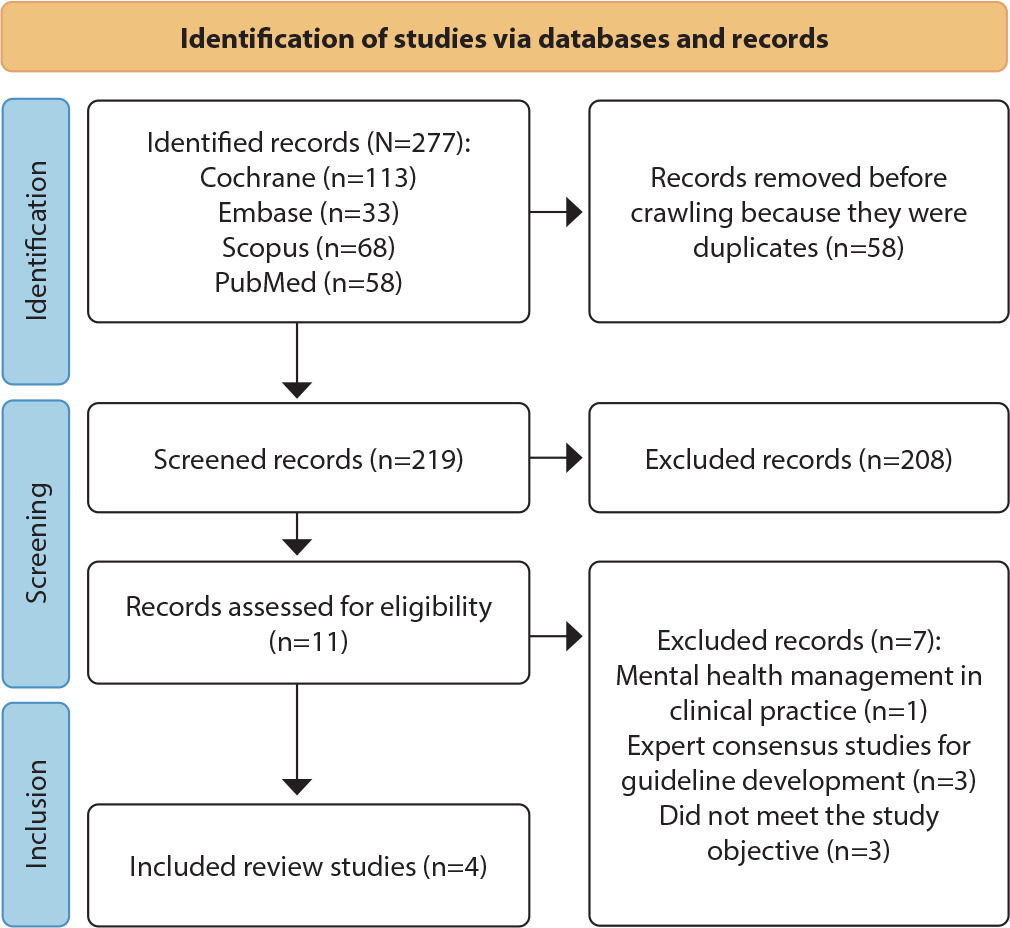
-
ORIGINAL ARTICLE
Patient safety incidents identified by the caregivers of hospitalized children
Revista Brasileira de Enfermagem. 2019;72(3):707-714
06-27-2019
Abstract
ORIGINAL ARTICLEPatient safety incidents identified by the caregivers of hospitalized children
Revista Brasileira de Enfermagem. 2019;72(3):707-714
06-27-2019DOI 10.1590/0034-7167-2018-0484
Views0See moreABSTRACT
Objective:
to analyze patient safety incidents identified by caregivers of hospitalized children.
Method:
a qualitative, exploratory-descriptive study was carried out with 40 caregivers of children hospitalized in three hospital institutions in the city of Porto Alegre, Rio Grande do Sul State, Brazil, from April to December 2016. Semi-structured, recorded and transcribed interviews were carried out in their entirety, submitted to a thematic analysis using the NVivo 11.0 software.
Results:
reports related to falls, infant feeding, patient/caregiver identification, medication process, communication, hand hygiene and hygiene of the hospital environment, spread of diseases, relations between caregivers and professionals and care processes/procedures were all cited.
Final considerations:
communication and the relations among caregivers and professionals are the main contributory factors for patient safety incidents, interfering with the quality of care. The participation of caregivers and engagement in child care may be strategies to be developed to promote a safety culture.
-
ORIGINAL ARTICLE
Tuberculosis: health care and surveillance in prisons
Revista Brasileira de Enfermagem. 2019;72(5):1304-1310
09-16-2019
Abstract
ORIGINAL ARTICLETuberculosis: health care and surveillance in prisons
Revista Brasileira de Enfermagem. 2019;72(5):1304-1310
09-16-2019DOI 10.1590/0034-7167-2018-0260
Views0ABSTRACT
Objective:
To identify tuberculosis-related health care and surveillance actions in Prison Health Units.
Method:
Cross-sectional study, of quantitative, exploratory and descriptive character. We visited 13 Teams of Prison Health, and nurses and technicians were interviewed regarding epidemiological surveillance instruments, physical structure and materials.
Results:
Search for respiratory symptoms in admission was reported by 6 (46.2%) of the teams, and the smear microscopy was the most requested test. The Logbook of Respiratory Symptoms and the Logbook for Monitoring Tuberculosis Cases were used in 7 (53.8%) institutions. Two of them (15.4%) had a location for sputum collection and 1 (7.7%) had a radiographer. The Directly Observed Therapy was reported in 7 (53.8%) units.
Conclusion:
Health care actions related to the search for respiratory symptoms and Directly Observed Therapy should be expanded, as well as surveillance actions and recording in official documents of the National Tuberculosis Control Program.
Keywords:Cross-Sectional StudiesDelivery of Health CarePrisonsPublic Health SurveillanceTuberculosisSee more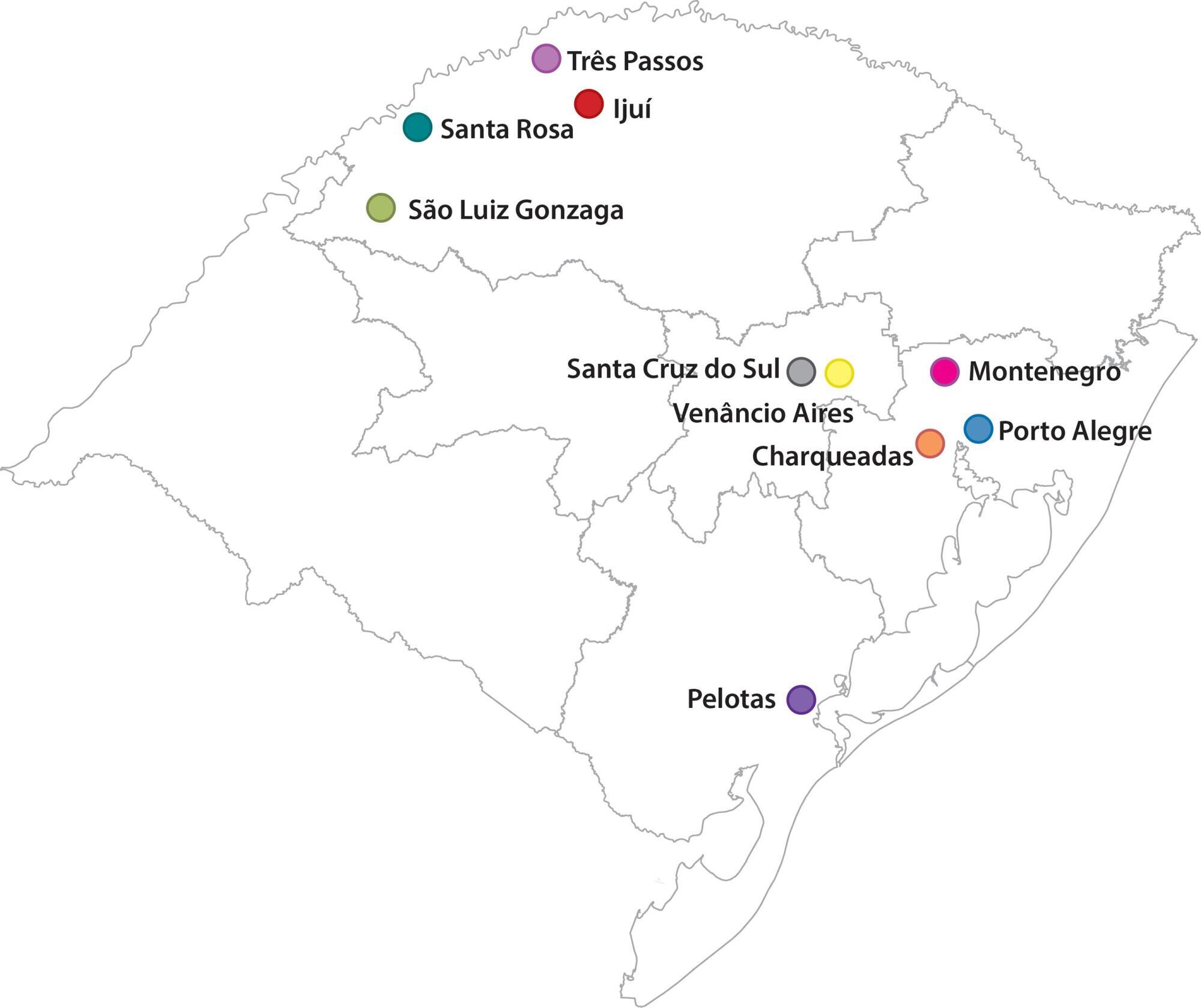
-
ORIGINAL ARTICLE
Adaptation and validation of the Advanced Practice Nursing Competency Assessment Instrument
Revista Brasileira de Enfermagem. 2022;75(5):e20210582
03-07-2022
Abstract
ORIGINAL ARTICLEAdaptation and validation of the Advanced Practice Nursing Competency Assessment Instrument
Revista Brasileira de Enfermagem. 2022;75(5):e20210582
03-07-2022DOI 10.1590/0034-7167-2021-0582
Views0ABSTRACT
Objective:
To adapt and validate the content of the Advanced Practice Nursing Competency Assessment Instrument (APNCAI) to Brazilian culture.
Methods:
This is a methodological study that followed the stages of translation, synthesis, back translation, evaluation by a committee of five specialists, pre-test with 31 nurses, and evaluation by the author of the original instrument. The Content Validity Index (minimum 0.90) and the modified Kappa (minimum 0.74) were calculated to evaluate the content.
Result:
In the first round of content evaluation, 18 items had to be altered because they did not reach the minimum values established. Three items have not reached a consensus in the second round and had to be sent to the author of the original version. In the pre-test, 13 items were returned to the specialists because they suffered content changes.
Conclusion:
The Advanced Practice Nursing Competency Assessment Instrument (APNCAI) – Brazilian version was cross-culturally adapted, and its content was validated.
Keywords:Advanced Practice NursingClinical CompetenceRole of the Nursing ProfessionalTranslationValidation StudiesSee more -
REVIEW
Frailty syndrome in the elderly: conceptual analysis according to Walker and Avant
Revista Brasileira de Enfermagem. 2020;73:e20190601
07-29-2020
Abstract
REVIEWFrailty syndrome in the elderly: conceptual analysis according to Walker and Avant
Revista Brasileira de Enfermagem. 2020;73:e20190601
07-29-2020DOI 10.1590/0034-7167-2019-0601
Views0See moreABSTRACT
Objective:
To analyze the concept of “frailty syndrome” in the literature, according to the method proposed by Walker and Avant.
Methods:
It is a concept analysis, guided by the method proposed by Walker and Avant, made operational through an integrative literature review. The search in a scientific database was carried out using the descriptors: Frail elderly, syndrome, phenotype, geriatric assessment, and aging. The literary corpus comprised 66 studies. Results: The study found the antecedents and attributes (categorized as physical, sociodemographic, and behavioral/environmental) that integrate the signs and symptoms evidenced in the “frailty syndrome,” as well as the consequences of this concept. The variables were analyzed with emphasis on the conceptions that influence the frailty process of the elderly.
Conclusion:
The study demonstrated the complexity arising from the multifactorial genesis of the referred syndrome, emphasizing the specificities of the elderly’s frailty. However, we recommend conducting further research involving the phenomenon in question to understand the construct better.
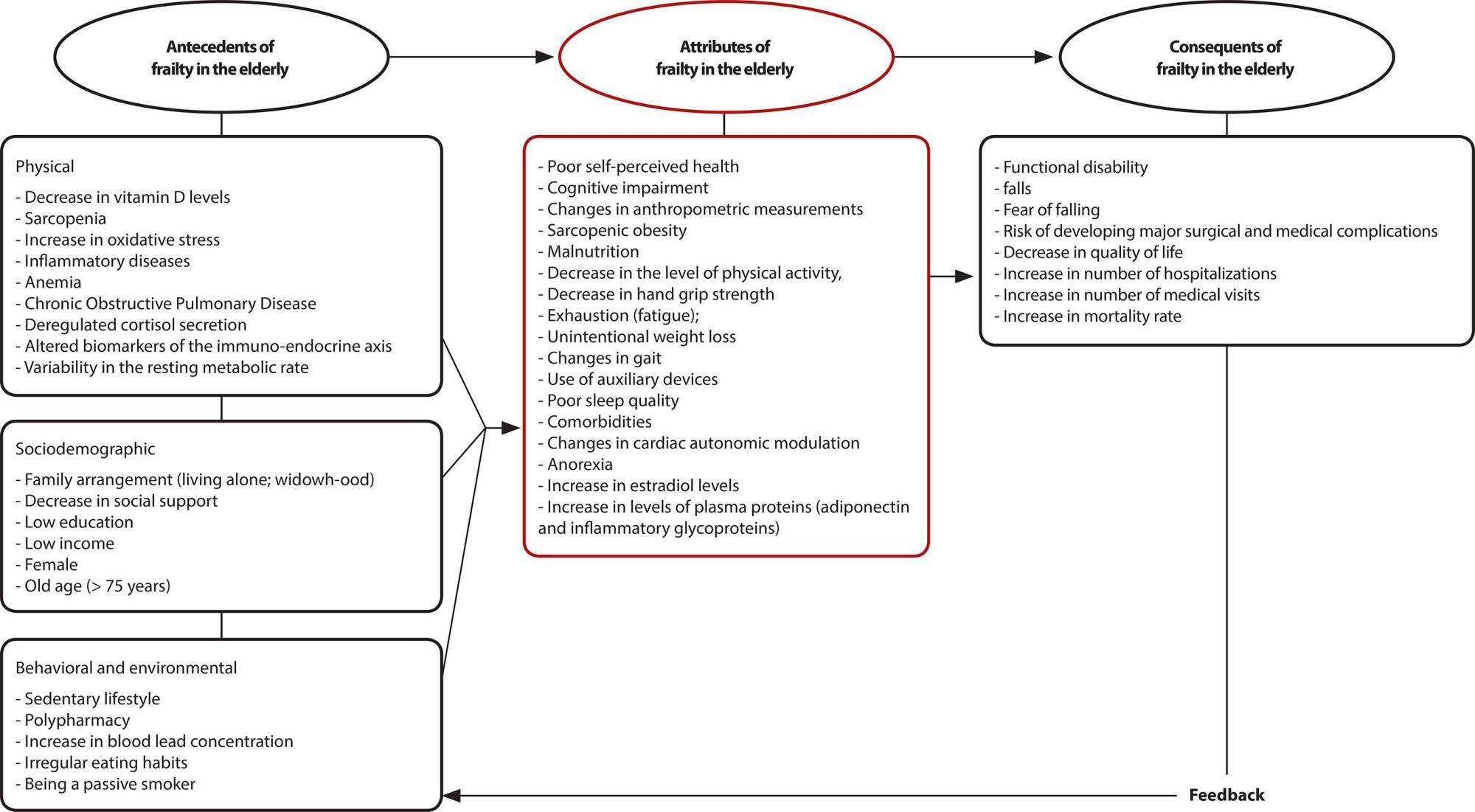
-
Construct validation: coping with HIV/AIDS in Primary Health Care
Revista Brasileira de Enfermagem. 2019;72(5):1173-1181
09-16-2019
Abstract
Construct validation: coping with HIV/AIDS in Primary Health Care
Revista Brasileira de Enfermagem. 2019;72(5):1173-1181
09-16-2019DOI 10.1590/0034-7167-2018-0734
Views0ABSTRACT
Objective:
To validate the construct and measure the trustworthiness of a questionnaire aimed at assessing HIV/AIDS coping actions developed by health professionals in Primary Health Care.
Method:
A methodological study carried out with 397 primary health care professionals in two municipalities in the Northeast region of Brazil. The construct validity was developed by the exploratory and confirmatory factor analysis, and the reliability analyzed by the reliability and reproducibility.
Results:
The validation determined six factors retention that composed the six domains of the questionnaire. Internal consistency was 0.91 and quality of the confirmatory analysis adjustment was 0.998 for Goodness of Fit Index. The domains presented Kappa values between 0.833 and 0.997.
Conclusions:
The final questionnaire was composed of 18 items and presented feasibility of application, and potential to evaluate actions for HIV/AIDS control in Primary Health Care.
Keywords:Acquired Immunodeficiency SyndromeHealth EvaluationHIVPrimary Health CareValidation StudiesSee more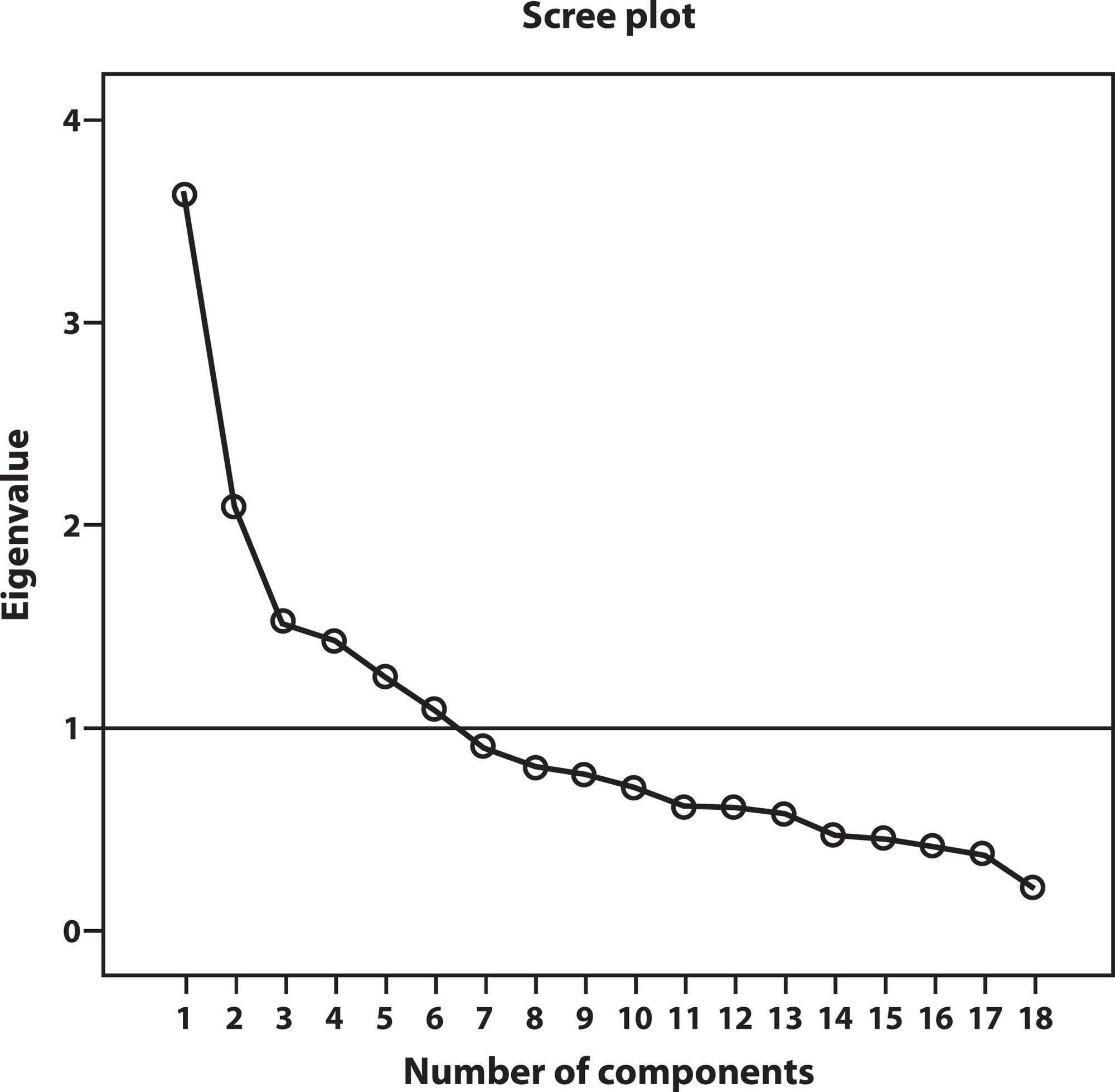
-
Development of middle-range theories in nursing
Revista Brasileira de Enfermagem. 2020;73(1):e20170893
02-10-2020
Abstract
Development of middle-range theories in nursing
Revista Brasileira de Enfermagem. 2020;73(1):e20170893
02-10-2020DOI 10.1590/0034-7167-2017-0893
Views0See moreABSTRACT
Objective:
To identify in the literature how Middle-Range Theories (MRT) are being developed in Nursing.
Method:
Integrative review on the databases Lilacs (Latin American and Caribbean Literature in Health Sciences), Scopus, Cinahl (Cumulative Index to Nursing and Allied Health Literature), Web of Science and PubMed portal, using the keywords middle range theory and nursing, as well its Portuguese correspondents (Lilacs), and the Boolean operator AND. The sample included 25 articles.
Results:
All articles presented concepts related to MRT. Most developed a synthesis picture. Some theories have formulated specific propositions, hypotheses, and names. Only 16 articles cited the methodological framework, while 22 used theories or models for theoretical foundation and 11 carried out literature reviews.
Final considerations:
The development of MRT included the presentation of fundamental concepts, synthesis, propositions, hypotheses and specific name. The MRT is recognized as a way of developing knowledge to guide the nursing practice.
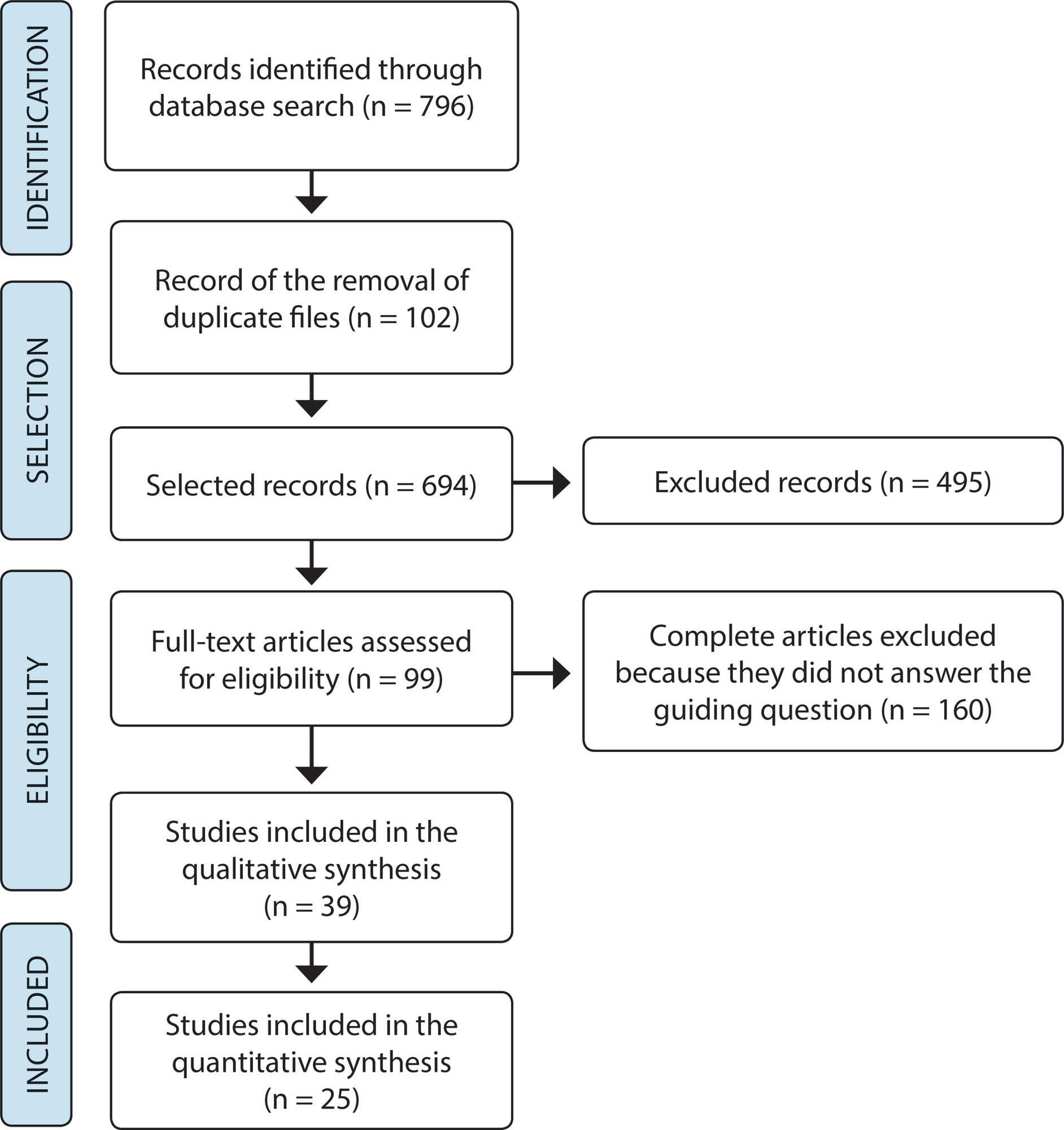
-
REVIEW
Assessment of patient safety culture in Brazilian hospitals through HSOPSC: a scoping review
Revista Brasileira de Enfermagem. 2021;74(6):e20201315
08-20-2021
Abstract
REVIEWAssessment of patient safety culture in Brazilian hospitals through HSOPSC: a scoping review
Revista Brasileira de Enfermagem. 2021;74(6):e20201315
08-20-2021DOI 10.1590/0034-7167-2020-1315
Views0ABSTRACT
Objectives:
to describe, from literature, the characteristics of patient safety culture in Brazilian hospitals that applied the Hospital Survey on Patient Safety Culture.
Methods:
this is a scoping review. A search was performed in the databases LILACS, PubMed, SciELO, CINAHL, Web of Science, Scopus and in the CAPES Dissertations and Theses Database in September and October 2020.
Results:
thirty-six studies were identified. Nine studies identified strengthened areas such as: “teamwork within the units”, “expectations of supervisor/boss and actions promoting safety”, “organizational learning”, “support of hospital management for patient safety” and “frequency of report of events”. As a critical area, the dimension “non-punitive response to error” was evidenced in 30 of 36 studies.
Conclusions:
the identification of areas of strength and critical areas of safety culture is relevant to encourage improvement of patient safety problems in an institution.
Keywords:HospitalsOrganizational CulturePatient SafetyQuality Indicators, Health CareQuality of Health CareSee more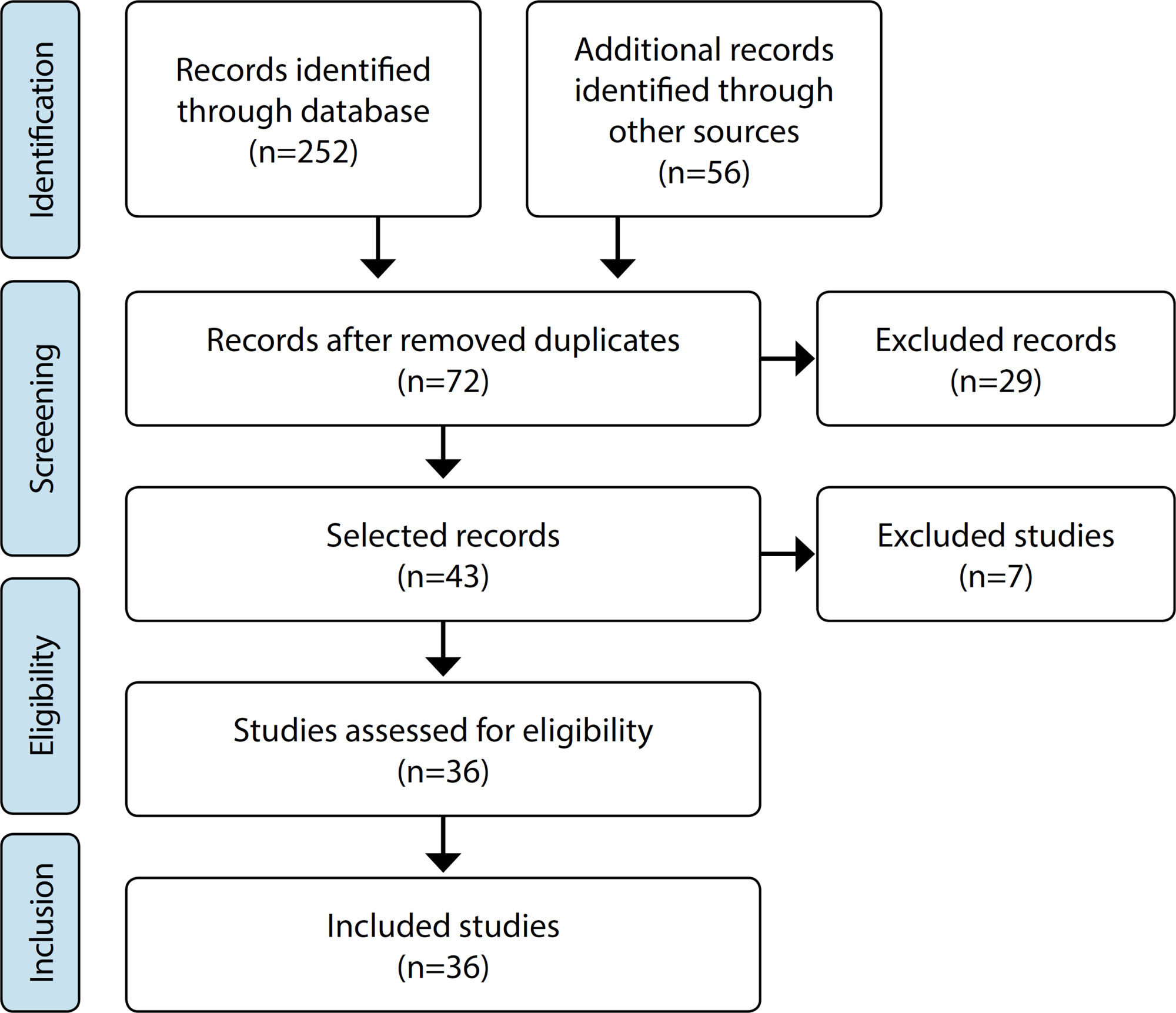
-
ORIGINAL ARTICLE
Low-laser light therapy in venous ulcer healing: a randomized clinical trial
Revista Brasileira de Enfermagem. 2022;75(3):e20210396
11-12-2022
Abstract
ORIGINAL ARTICLELow-laser light therapy in venous ulcer healing: a randomized clinical trial
Revista Brasileira de Enfermagem. 2022;75(3):e20210396
11-12-2022DOI 10.1590/0034-7167-2021-0396
Views0ABSTRACT
Objectives:
to compare the effect of adjuvant low-laser light therapy versus conventional treatment alone on venous ulcer healing.
Methods:
this is a randomized clinical trial with 40 patients randomized equally to a control group (topical and compressive treatment) and intervention group (adjuvant low-laser light therapy). Outcomes of interest were Wound Healing: Secondary Intention and Tissue Integrity: Skin & Mucous Membranes, as described in the Classification of Nursing Outcomes/NOC.
Results:
groups with similar sociodemographic and clinical characteristics. Eighty-two ulcers were assessed, with an average duration of 1 to 5 years, in 1,066 nursing consultations, with a statistically significant difference in the time and number of healed ulcers (intervention group). There was a significant improvement in the nursing outcomes under study and in eight clinical indicators.
Conclusions:
low-laser light therapy improves and reduces tissue regeneration time, contributing to advances in wound treatment.
Keywords:Low-Laser Light TherapyOutcome AssessmentStandardized Nursing TerminologyVenous UlcerWound HealingSee more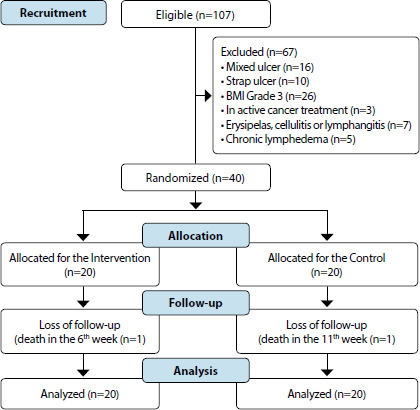
Search
Search in:
Nuvem de Tags
Aged (144) Atenção Primária à Saúde (239) COVID-19 (104) Cuidados de Enfermagem (269) Educação em Enfermagem (151) Educação em Saúde (139) Enfermagem (930) Estudos de Validação (131) Health Education (144) Idoso (208) Mental Health (149) Nursing (987) Nursing Care (306) Patient Safety (151) Primary Health Care (284) Qualidade de Vida (104) Quality of Life (106) Saúde Mental (145) Segurança do Paciente (150) Validation Studies (108)



